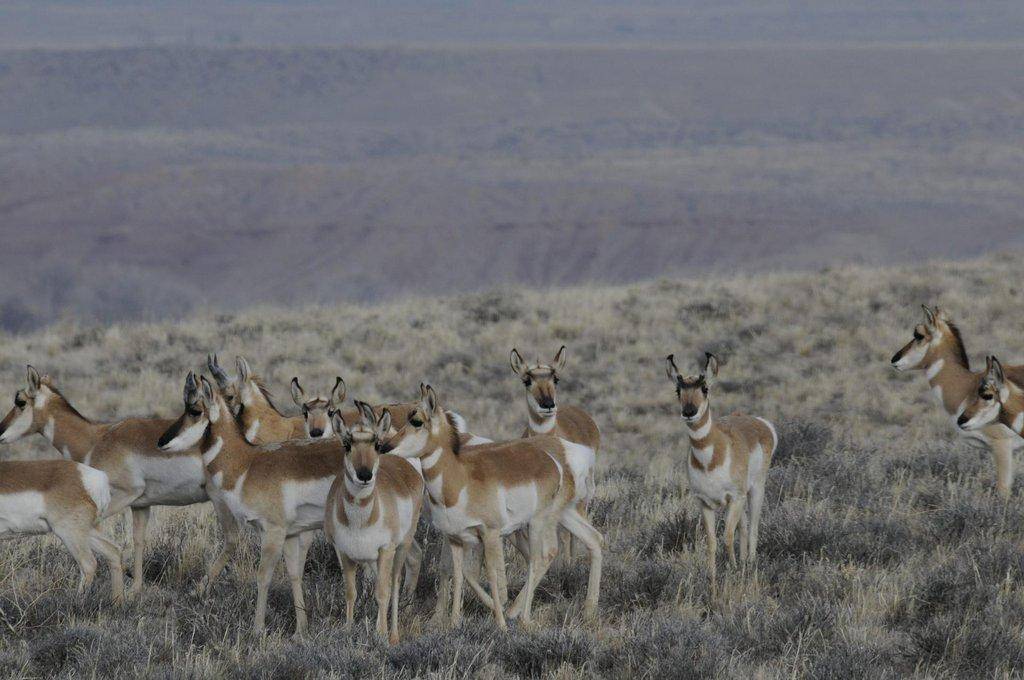DWR News Release
Utah Division of Wildlife Resources biologists recommended a decrease in the number of general-season permits for the 2021 deer hunt and are asking for the public’s feedback on that recommendation and a variety of other big game proposals.
Why the recommendations are being made
The DWR manages deer, elk and other wildlife in accordance with approved management plans in order to help maintain healthy wildlife populations across the state. DWR biologists evaluate the health of deer populations throughout the year (through GPS collaring efforts and surveys), and also assess the previous year’s harvest data from the deer and elk hunts. That data is factored in with current habitat and environmental conditions across the state before the hunting permit recommendations are made for the upcoming hunting seasons.
The current management plan includes an objective to have just over 400,000 deer across Utah — there are currently an estimated 314,850 deer in the state.
“We’ve had a few drought years in Utah recently, which has a significant impact on the survival rates of deer,” DWR Big Game Coordinator Covy Jones said. “In Utah, we have the longest range trend study in the Western U.S., and we’ve seen that having suitable habitat is crucial for maintaining or growing wildlife populations. And drought conditions can really negatively impact that habitat, which in turn affects our wildlife species.”
DWR biologists are recommending a total of 74,775 general-season deer hunting permits, which is a 4,900-permit decrease from the previous year. Of the 29 total deer hunting units across the state, 16 are being recommended for decreased permit numbers from the previous year.
“The number of permits we’re proposing for 2021 will help us achieve or maintain the objectives detailed in Utah’s mule deer management plan for harvest size, animal quality and hunting opportunity,” Jones said. “The biology and herd health of our wildlife come first when making hunting permit recommendations.”
The big game permit recommendations
The table below shows all the permit recommendations for the 2021 big game hunting seasons:
| Hunt | 2020 | 2021 |
| General-season buck deer | 79,675 | 74,775 |
| Premium limited-entry deer | 184 | 184 |
| Management buck deer (including “cactus” bucks) | 64 | 45 |
| Handgun, archery, muzzleloader,
and shotgun (HAMS) limited-entry buck deer hunts |
15 | 15 |
| Limited-entry deer | 1,182 | 1,070 |
| Doe deer | 1,175 | 935 |
| General any bull elk | 15,000 | 17,500 |
| General spike bull elk | 15,000 | 15,000 |
| Cow elk | 8,060 | 8,285 |
| Youth any bull elk | 500 | 500 |
| Limited-entry bull elk | 2,948 | 2,989 |
| Buck pronghorn | 1,147 | 1,173 |
| Doe pronghorn | 525 | 404 |
| Bull moose | 107 | 112 |
| Cow moose | 31 | 15 |
| Bison | 97 | 147 |
| Desert bighorn sheep | 78 | 81 |
| Rocky Mountain bighorn sheep | 65 | 67 |
| Rocky Mountain bighorn sheep ewe hunt | 10 | 10 |
| Mountain goat | 122 | 120 |
New antlerless hunts
DWR biologists are also recommending adding two new doe deer hunts to address damage to agricultural areas caused by deer, as well as other urban deer issues within Price and Oak City. Ten new cow elk hunts are also being proposed, as well as a new doe pronghorn hunt.
“Antlerless deer hunts are designed to reduce depredation on private lands, tackle urban deer issues, address chronic wasting disease hot spot areas, and to help slow the decline of range conditions,” Jones said.
Other amendments
The DWR oversees the Cooperative Wildlife Management Unit program, which allocates hunting permits to private landowners who then provide hunting opportunities to public and private hunters for a variety of wildlife species. The CWMU program in Utah has opened more than 2 million acres of private land to the public for hunting. The DWR proposed a total of 1,265 antlerless permits for 66 CWMUs for the 2021 hunting season.
The DWR also proposed a few administrative and rule changes for conservation permits.
Give feedback
In order to follow health officials’ recommendations to decrease the spread of COVID-19, the public meetings for these proposals will be held online. You can view the biologists’ presentations and share your feedback about them here on the DWR website. The presentations can also be viewed on the DWR YouTube Channel, but comments can only be submitted through the forms on the DWR website.
The public comment period for each of the five Regional Advisory Council meetings and for the Utah Wildlife Board meeting opened on March 23. Public comments submitted within the online-comment timeframes listed below will be shared with the RAC and wildlife board members at each respective meeting. While members of the public can watch a livestream of each of the RAC meetings and the Utah Wildlife Board meeting, public comments will not be accepted during these electronic meetings.
The electronic meetings will be held on the following dates and times:
- Central Utah RAC meeting: April 6 at 6 p.m. (Public comments must be submitted by April 1 at 11:59 p.m.)
- Northern Utah RAC meeting: April 7 at 6 p.m (Public comments must be submitted by April 2 at 11:59 p.m.)
- Southern Utah RAC meeting: April 13 at 6 p.m. (Public comments must be submitted by April 8 at 11:59 p.m.)
- Southeastern Utah RAC meeting: April 14 at 6:30 p.m. (Public comments must be submitted by April 9 at 11:59 p.m.)
- Northeastern Utah RAC meeting: April 15 at 6 p.m. (Public comments must be submitted by April 9 at 11:59 p.m.)
- Utah Wildlife Board meeting: April 29 at 9 a.m. (Public comments must be submitted by April 22 at 11:59 p.m.)

